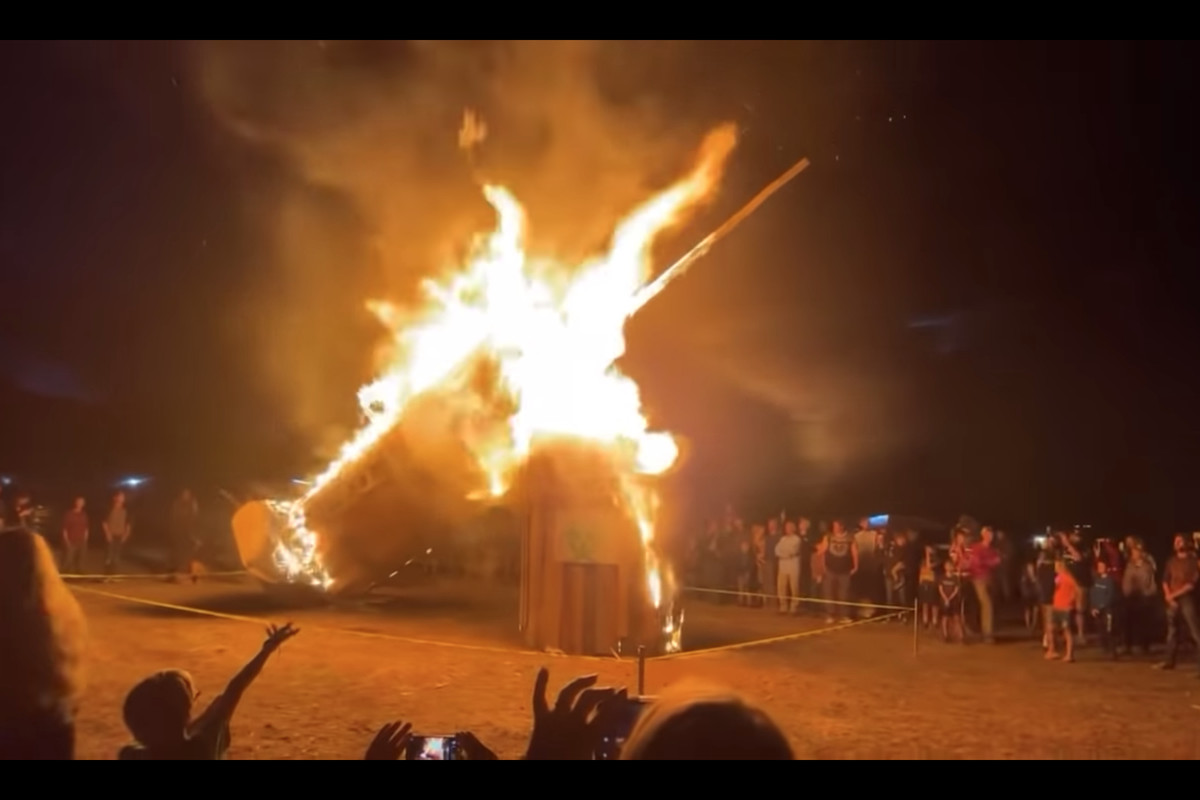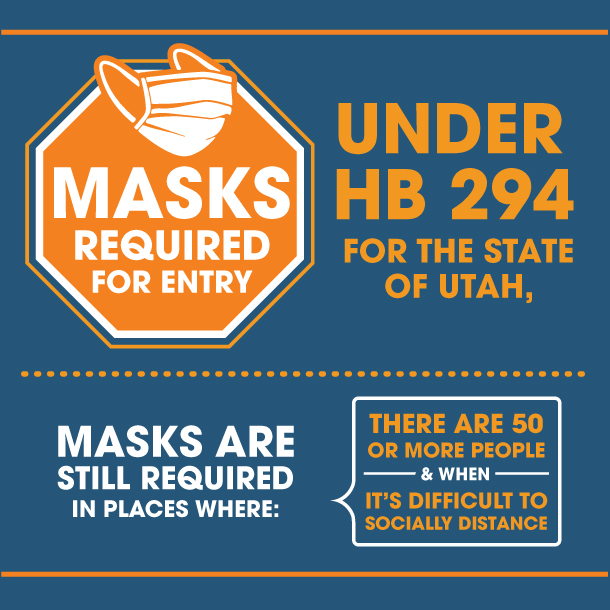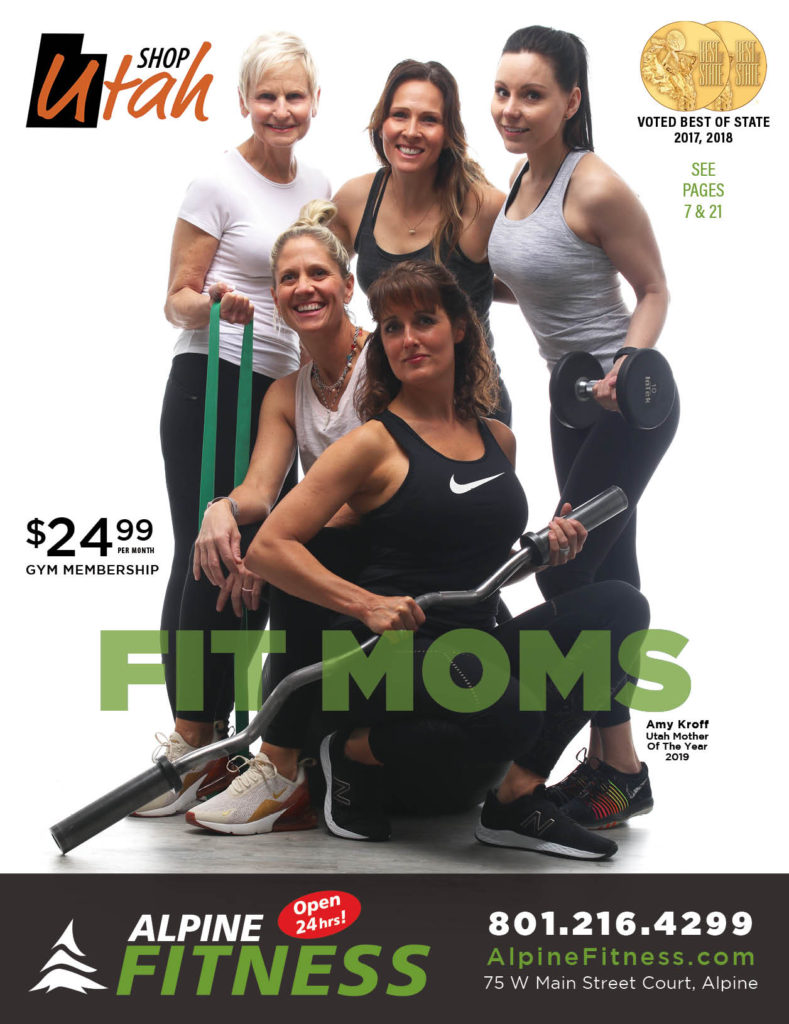PROVO, Utah – It didn’t take long for the world’s largest syringe to go up in flames. Doused in gasoline and constructed of plywood, the giant needle — standing 23 feet in height— was completely enveloped in fire within minutes.
Hundreds of observers cheered. “Down with medical tyranny!” a handful of kids yelled. Some wore “I’m Essential” T-shirts — advertisements for a new, anti-COVID-19 lockdown documentary produced by Eric Moutsos.
Moutsos helped organize this so-called “Night of Liberty” in Moroni, Sanpete County, in late April. He gained a following on social media during the pandemic, forming the “Utah Business Revival” group and garnering headlines for controversial concerts and rallies.
But his was hardly the most recognizable name at the event. Among its attendees were Ammon Bundy, the Idaho anti-government gadfly; Utah state Rep. Phil Lyman, a public lands activist pardoned by Donald Trump; Morgan Philpot, Bundy’s attorney and a former Utah gubernatorial candidate; and Natalie Cline, a Utah state school board member recently accused of racism and homophobia.
“We live in the United States of America. This is God’s country,” Moutsos said while filming the burning syringe on a Facebook Live video. “This land was intended to be free. And what the government has done this last year is immoral.”
The giant syringe leaned on a seven-foot-tall platform (with “BIOHAZARD” written on it), but the fire began to eat away its base. “Back up!” someone yelled. As the giant needle collapsed in flames, the crowd erupted.
Dozens of families stayed through the night, watching Moutsos’ “Non-Essential” documentary on a projector and playing games. After the syringe’s flames went out, one family returned to the rubble to roast marshmallows on the coals. “It would be so fun to have s’mores on the ready next time we burn another false god idol,” one Facebook user later commented.
It would be easy to assume that this kind of an event reflects rural sentiment about vaccines, and it is the primary reason rural America is struggling to reach herd immunity. But other larger forces — including access to health care — may be more consequential.
The flailing mark of herd immunity
I grew up in the Sanpete Valley, 20 miles south of Moroni. Summer nights there are cool and dark, and without the entertainment luxuries of a city, teenagers have to get creative. Bonfires were always a Friday-night staple — a summertime ritual, of sorts. Friends would burn old couches down by the reservoir or roast marshmallows up the canyon.
The Moroni “bonfire,” for obvious reasons, was different. More appalling than the rejection of science was the realization that some of my neighbors or friends may have been there. And more harrowing still is the event’s implications on our collective ability to claw out of this pandemic.
Our road to herd immunity runs through rural America. And rural vaccine hesitancy could keep us from getting there.
At this point, small-town vaccination rates lag far behind suburban and urban ones, and if they don’t catch up, reaching herd immunity against COVID-19 will be impossible. Many scientists have already thrown in the towel. “There is widespread consensus among scientists and public health experts that the herd immunity threshold is not attainable,” a New York Times article said in early May, “at least not in the foreseeable future, and perhaps not ever.”
We can still control the virus without widespread immunity or eradication, though. We’ve already seen exponential decay in COVID-19 cases in the U.S. as more and more vaccines go into arms. But continued immunity starts with highly immune communities, where interpersonal spread tapers off. “All vaccines work at the community level more so than the personal level,” Dr. Hannah Imlay, assistant professor of infectious disease at University of Utah, told me. “The thing that protects you most from getting sick and dying is no one in your community giving it to you.”
By that measure, Utah’s rural communities pose a much larger threat than most of the Wasatch Front. In Salt Lake and Summit counties, for instance, 35.1% and 51.2% of the populace are fully vaccinated; in the central Utah region, spanning from Juab to Wayne counties, only 24.2% are.
The county-by-county breakdown is even more troubling. In Sanpete County, 21.1% of the population is fully vaccinated, and 26.4% has received at least one dose. A recent survey from the Utah Department of Health suggests that just 42.4% of unvaccinated adults are very likely to get a vaccine, which would put the county just shy of 50% of the population vaccinated. And while the percentage of vaccinated or infected individuals to reach herd immunity is disputed, Sanpete County would need to vaccinate every child under 18 to reach 75% — still short of the 80% scientists now say is the minimum for herd immunity.
Of rural areas, Sanpete County is not the least vaccinated. Utah’s TriCounty Health District, comprising Duchesne, Daggett and Uintah counties, has the state’s lowest vaccine rate, at just 21.8% fully vaccinated. And, in Duchesne County, only 24.5% of unvaccinated adults say they are very likely to get vaccinated; in Uintah County, it’s 22.1%.
“What I suspect will happen is we will have pockets of the United States that have high levels of immunity, and we will have pockets of the United States that have low levels of immunity,” Imlay said.
The real reason for rural hesitancy
Understanding why vaccine rollout is slower in rural areas is not easy. I have reason to hope — and to believe — the anti-vaccine antics of the Moroni fire do not represent the majority of Sanpete County, or of rural Utah, or of rural America.
Rural vaccine hesitancy is more nuanced than sheer antagonism to science, or unhinged loyalty to a certain interpretation of “liberty.” A Hastings Center report in late April offered other explanations. “Low vaccination rates aren’t due to vaccine hesitancy,” the report read, “but (to) challenges signing up for an appointment, challenges getting to vaccination sites, and other pressing health and survival needs.”
One Sanpete County resident told me these concerns are warranted — he had to travel to the other side of the valley, to Mt. Pleasant, to receive his Moderna doses. Without any public transportation, getting there is difficult for those without vehicles or for the elderly.
Polling from the Kaiser Family Foundation also shows that rural Americans are far less worried than their urban or suburban counterparts about getting sick from COVID-19. Forty-four percent believe the seriousness of the pandemic has been exaggerated. And the most common response of those who say they won’t receive the vaccine is that it’s too new, or that there isn’t enough information about the vaccines yet.
While we praise a vaccine in record time, they say it was too fast. So it’s not a pure distrust of science altogether but a belief that the science improves with time and they’re in no rush. The urgency to get vaccinated felt by many urban and suburban Americans is lost on many rural residents.
“For us, life went back to normal months ago,” a friend in Ephraim told me. Many rural communities across the country are the same. The general nature of rural communities — spread out, lightly populated — made the pandemic a smaller adjustment than most.
“Depending on where you are in (Sanpete) County, social distancing and isolation isn’t a major change to your lifestyle,” one resident of Wales — population 300 — told me. Aside from masks in schools, “pandemic restrictions basically ended last fall,” another said.
For many of us, vaccines are the first step to reclaiming “normal” life. For many in rural America, life is already normal. And while COVID-19 cases and deaths have occurred, many rural areas haven’t seen massive outbreaks. That alone could be enough to call the news coverage of COVID-19 “exaggerated” or to not worry about getting sick.
Even those who saw the pandemic’s agonizing effects firsthand may still be hesitant. The New York Times, in writing about vaccine hesitancy in rural North Carolina, quoted one couple who lost 11 friends to the virus. They still don’t plan on getting vaccinated. “What’s the point, they ask? The government still wants you to wear a mask indoors.”
Government wariness is an issue. Most rural residents think the government does more to help those living in cities than those in rural areas. But even so, while rural voters helped Trump win in 2016 and were among his most reliable voting blocs in 2020, few (14%) of rural Americans who are vaccine-hesitant say Trump telling them to get vaccinated would change their minds.
A matter of messaging
Utah Gov. Spencer Cox seems to understand this. A resident of Fairview, some 13 miles from last month’s syringe inferno — he understands the hesitancies of his neighbors. And as rural Utah’s vaccination rates continue to lag the rest of the state, he’s trying to take action.
To negate inaccessibility for rural communities without public transit, Cox is sending free, mobile vaccine clinics to groups that request it. Many vaccine sites no longer require appointments, and Utah residents can now text their ZIP code to “438829” to see three nearby locations.
“We want to make it as easy as possible,” Cox recently said. “We want to take away any excuses for not being able to get the vaccine.”
But a more noticeable shift is in Cox’s tone. He recently retweeted a story from The Atlantic that questions continued pandemic restrictions after vaccination. He’s encouraged Utahns to take their masks off and go outside, echoing updated CDC guidelines for the fully vaccinated. And he’s expressed excitement about life post-vaccine. “Just a reminder to those of you who are fully vaccinated: It’s OK to act like it,” he said during his monthly news conference in April. “It’s a good thing. Spend some time with your friends and family and loved ones. Do some things you haven’t been able to do over the last year. And please enjoy that vaccinated status.”
Gov. Cox took the same message to President Joe Biden Tuesday, asking the president during a virtual meeting for “help … modeling what a fully vaccinated person can do. I like to say that we have fully vaccinated people, and we should start acting like it.”
“That’s a good point,” President Biden responded. “ … I think you’re going to see a more aggressive effort on our part to lay out that it’s not only you can hug your grandchildren, you can do a lot more.”
As much of rural Utah feels little urgency to get vaccinated, Cox’s emphasis on the vaccine as liberation could go far. Rugged individualism and individual liberty are hallmarks of the rural lifestyle, and if rural communities don’t see a benefit to getting vaccinated, they won’t do it. Cox is trying to give them a reason.
It will be weeks before we’ll see results, if any. But a change of tone is the right start. And with Pfizer vaccine eligibility opening to 12-year-olds and older as soon as this week, another uptick in vaccination rates is on the horizon.
With more vaccines, we’re inching closer to post-pandemic life. But we can’t get there without immunity in rural areas. If they resist, our collective hopes of herd immunity go up in flames just as fast.






